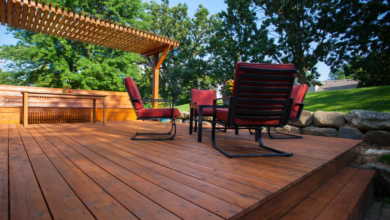How to Choose the Right Wood for Your Decking Project?

A new deck can elevate your outdoor living experience, and selecting the right wood is one of the most important decisions you’ll make in the process. If you’re planning a custom outdoor space and seeking guidance from a deck builder in Milton, it helps to understand how material choices impact durability, maintenance, and aesthetics. Each wood type offers its own set of benefits, and the best choice depends on your goals, budget, and climate.
Understanding the Key Wood Options
Natural wood continues to be a popular decking material because of its warmth, structural integrity, and classic look. The most commonly used wood types include pressure-treated pine, cedar, redwood, and tropical hardwoods like ipe.
Pressure-treated pine is the most affordable option and is chemically treated to resist rot and insects. It’s widely available and easy to work with, but it requires regular maintenance to prevent warping and cracking.
Cedar and redwood are naturally resistant to decay and insects, offering a richer tone and smoother grain. These softwoods are more expensive than pine but generally last longer and require less upkeep. For a premium option, tropical hardwoods provide exceptional strength, density, and longevity. However, they are more difficult to install and typically come at a higher cost.
Choosing the right wood also means understanding your long-term commitment to maintenance. Homeowners exploring what to know before hiring a deck builder are often advised to discuss not just design but also wood preservation needs. A professional can help you evaluate how each material performs in your environment and how it will age over time.
Balancing Performance and Style
Wood selection isn’t just about strength, it’s also about aesthetics. Grain patterns, texture, and color tones vary widely across species. If you’re aiming for a rustic, natural look, cedar and redwood may appeal to your taste. If you’re leaning toward a more modern or high-end finish, tropical hardwoods like ipe or mahogany provide sleek appeal and long-term resilience.
Finishing options can also influence appearance and performance. Stains can enhance the natural wood grain or alter its tone entirely, while sealants offer UV protection and water resistance. The more frequently you refinish or seal your deck, the better it will hold up against the elements.
Involving a professional early in the planning phase ensures that every choice, down to fasteners, board spacing, and coatings, is aligned with your goals and the wood’s natural characteristics.
Why Professional Guidance Matters
Building a long-lasting deck requires more than quality materials; it takes knowledge, technique, and experience. Homeowners often discover the role of a deck builder in outdoor space transformation goes far beyond simple installation. From foundational support to surface finishing, a seasoned builder ensures the structure is safe, compliant, and visually cohesive.
Professionals can recommend wood types based on sun exposure, drainage, and even insect risk factors that are often overlooked in DIY projects. They can also guide you through budget planning and timeline expectations, helping you avoid costly surprises.
Conclusion
Choosing the right wood for your deck is a foundational step in achieving a durable, beautiful outdoor space. With a clear understanding of your options and professional input, you can select a material that balances style, function, and long-term performance. A carefully built wood deck doesn’t just enhance your home’s exterior, it creates a gathering place for years of enjoyment.




